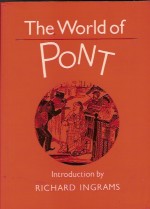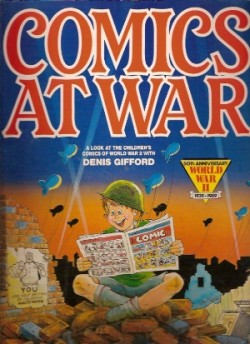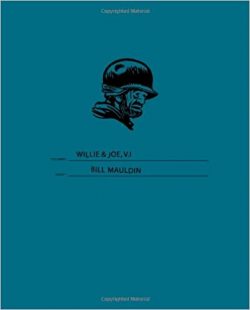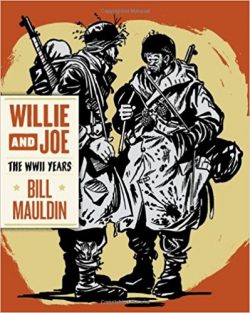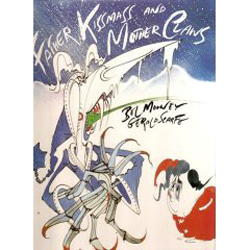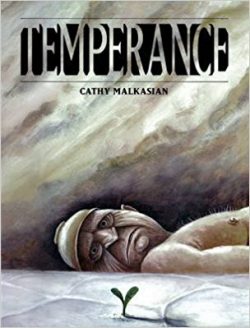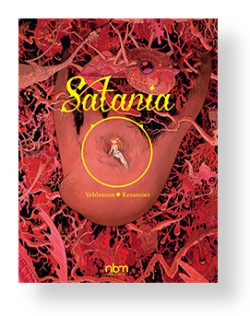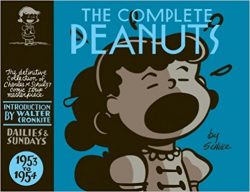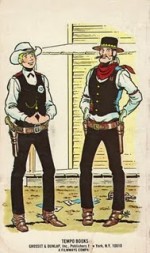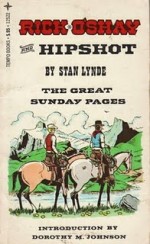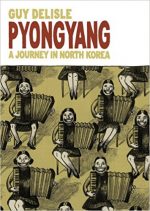
By Seán Michael Wilson & Michiru Morikawa (NBM)
ISBN: 978-1-68112-117-8
If God exists, why does he hate us?
It’s a question that has been asked countless times and – naturally – there has never been a universally satisfactory answer, but it’s made for plenty of philosophical and theological debate. It’s also provided many superb dramatists, satirists and comedians with a platform to create challenging and engaging stories of what might happen when the specimens in the cosmic Petri dish start complaining about the way we’ve been treated…
Scottish émigré and citizen of the world Seán Michael Wilson is a past master of “Deep†comics confronting real issues (Portraits of Violence – An Illustrated History of Radical Thinking; Goodbye God? – an Illustrated Examination of Science Vs Religion with Hunt Emerson) but is equally at home with more mainstream strip material such as The Story of Lee, Sweeney Todd or AX: Alternative Manga.
In the first volume of Breaking the 10 he combined fundamental life questions with an enticing manga sensibility to craft a powerfully absorbing tale of crushed hope, bitter disillusionment and grief-filled reaction. Simultaneous funny and thought-provoking, Breaking the 10 shared the tale of bereaved survivor and (formerly) devout Christian David…
Compounding the heretical soul-searching here is award-winning illustrator Michiru Morikawa, who previously collaborated with Wilson on Yakuza Moon, Demon’s Sermon, Musashi and The Faceless Ghost and affords a sleek, seductive pictorial allure to the sordid affairs…
When David’s wife and child were cruelly taken from him by a hit-&-run driver, the tragic survivor broke inside. Grieving and enraged, he demanded a meeting with God and a chance to force Him to explain His actions and motivations. With no response to prayer and no other recourse, David resolved to become a sinner, methodically and systematically breaking the Ten Commandments.
Regardless of the harm he inflicted upon others around him, the aggrieved apostate meticulously contravened the first five – Thou shalt not… steal; …Covet your neighbor’s house, wife, male servant, female servant, ox, donkey, nor anything that is thy neighbor’s; Remember the Sabbath day, to keep it holy; Thou shalt not make for yourself a graven image’ and ‘Thou shalt not bear false witness against your neighbors’ – despite the unwarranted and repeated interventions of two strangers fostering their own agendas…
As the campaign of heresy unfolded, these two antithetical gentlemen moved from merely watching David to actively offering counsel and unwelcome advice. Mr. Black and Mr. White are as different as two people can be: each propounding a harsh, doctrinaire and unequivocal stance at opposite ends of the emotional and religious spectrum…
David listens but will not heed either one, nor does he believe them the supernatural advocates they seem to be. Whilst they bicker over him or debate with him, it’s clear that they don’t know what the true game plan actually is and – as his celestial attention-getting antics escalate – they are proved to be utterly ineffectual in influencing him one way or the other…
Nothing is as it appears: White may well be the agent of an Interventionist creator, but his opposite number claims to be a simple disciple of a modern humanist rationalism rather than an operative of any supernatural Infernal Antagonist…
David doesn’t really care: his first assaults upon scripture might have offended all the Abrahamic religions and gained him a certain notoriety in the media but he’s no closer to God than before. It’s time to up the ante and hope the intransigence silence ends before he gets to the Tenth Commandment…
In Chapter one, while still pondering his course, David is approached by Mr. Black who helpfully points out that the sinner is labouring under an accounting error and has actually broken six Commandments thanks to how he dealt with the Coveting one. David will not hear it, and carries on planning how best to tackle ‘Thou shalt not commit adultery’, but the heated arguments Mr. Black makes are irrefutable…
With his mind shredding as much as his life has, David heads for the local church for ‘Thou shalt not take the name of the Lord your God in vain’, but is intercepted and physically contained by Mr. White. Shrugging off the beating, David fitfully shares his doubts with the scripture-spouting intercessionary: in a world where profanity and blasphemy are commonplace and ubiquitous how can he break this one? Lulled into a discussion on how politicians might use god and religion to further their own ambitions, Mr. White inadvertently gets lured onto other Christian “hot-button†topics and provides David with his answer and plan of attack, leading directly into the truly appalling and sacrilegious actions necessary to destroy the edict ‘Thou shalt have no other gods before me’…
With God still a no-show David then must steel himself for what is an incomprehensibly difficult task. Having overcome his scruples to harm innocents is one thing, but the things he says to his own parents before satisfactorily flouting ‘Honor your father and your mother’ leaves him dazed and furious…
With only one Commandment left unsullied, David again demands his meeting with the Supreme Being and is astonished when he finally has a vision. Sadly, after debating with God he wakes up in hospital and cannot accept that his unsatisfactory hallucination counts…
After Black and White contentiously visit him and sow more discord and confusion, David realises he must go the distance…
This is in many ways the most straightforward Commandment to break. Obtaining a gun, David heads for the local primary school, with ‘Thou shalt not kill’ burning in his brain…
Merging theosophy, political critique, a razor-sharp crash-course in ethics and responsibility whilst confronting faith, rationalism and religion in a genuinely funny and scary tragedy of everyday melodrama, Breaking the 10 asks hard questions in a deceptively easy-going manner.
Moreover, unlike previous graphic novels addressing this timeless theme – such Eisner’s A Contract with God or Garth Ennis & Warren Pleece’s True Faith – David’s eventual epiphanies and ultimate fate come more from pliable, tractable human nature than resolute divine order or intervention
Enquiring, engaging and utterly entertaining, this is a parable no saint or sinner should miss and every questing thinker should consider.
© 2018 Seán Michael Wilson & Michiru Morikawa.
Breaking the 10 volume 2 will released on February 2nd 2018 and can be pre-ordered now. It is also available in all e-book formats.
For more information and other great reads see http://www.nbmpub.com/

